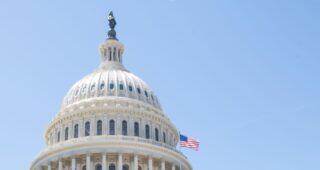Investing for Impact: Why U.S. Leadership is Critical to the Global Fight against AIDS, Tuberculosis and Malaria
Recently, the Elizabeth Glaser Pediatric AIDS Foundation (EGPAF) joined Friends of the Global Fight, Global Health Council, Malaria No More, Nothing But Nets, and Results on Capitol Hill to educate Congressional staff about critical U.S. investments to end HIV, malaria, and tuberculosis around the world.
An expert panel of global health leaders, composed of Peter Sands, Executive Director of the Global Fund to Fight AIDS, Tuberculosis and Malaria; Dr. Ken Staley, U.S. Global Malaria Coordinator; Amb. Deborah Birx, U.S. Global AIDS Coordinator & U.S. Special Representative for Global Health Diplomacy; and USAID’s Dr. YaDiul Makudi, Medical Officer and Senior Tuberculosis Technical Advisor, Office of Infectious Diseases, discussed the importance of U.S. investments in global health, and how these resources can be effectively leveraged by the Global Fund to Fight AIDS, Tuberculosis, and Malaria to achieve the greatest impact.
While each speaker works on eliminating a specific disease, the conversation centered around the importance of strengthening and integrating the broader health system . Amb. Birx argued that health systems strengthening goes beyond health infrastructure and personnel to really building a relationship with a community. She explained, “We at PEPFAR are unrelenting and unapologetic in our work because we are here to serve.” Dr. Staley agreed, stating that progress against an individual disease can free up capacity for an entire health system. As healthcare workers are able to spend less time treating HIV, TB, or malaria, they can devote more time to vaccination campaigns, prenatal care, or health education.
The Global Fund works with governments, the private sector, civil society, faith-based organizations, and affected populations to end AIDS, tuberculosis and malaria, investing almost $4 billion annually in this fight and saving 27 million lives since its creation in 2002.
The United States has always been the Global Fund’s largest donor, and its investments are leveraged to increase contributions from other donor countries. Said Peter Sands, “American leaders and taxpayers should be very proud.”
While the structure and programming of the Global Fund and U.S. global health agencies differ in many ways, these complementary differences actually allow for a more robust and efficient response to the “three diseases”. For example, while the President’s Malaria Initiative focuses more on directly administering services, such as distributing insecticide-treated nets and malaria treatment, the Global Fund operates indirectly by financing local organizations. This is why a combination of multilateral and bilateral organization support is critical – only by working together will we eliminate these disease.
Increasing resources in the global fight against AIDS, TB, and malaria is the only way to accomplish our shared goal. Dr. Makudi explained that defeating TB – the world’s leading infectious cause of death – requires better diagnostics, better treatment, and better prevention. Sands added every dollar spent needs to be efficiently used for programs, but also needs to be effectively leveraged to increase resources. As he said, “there isn’t just one recipe for how we achieve success.”
While tremendous progress has been made, ending the epidemics will require greater financial investment and continued collaboration. We must work together to end AIDS, TB, and malaria for good.
The good news? You can help!
Click here to urge Congress to protect global health and development funding today.
Team EGPAF
United States
Policy & Advocacy



